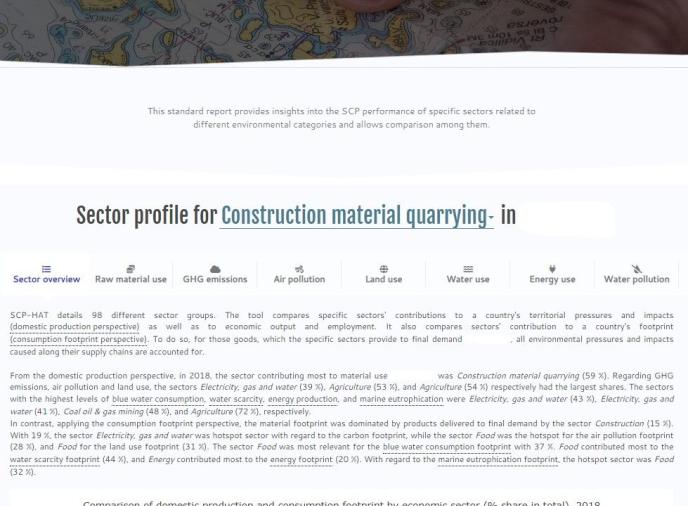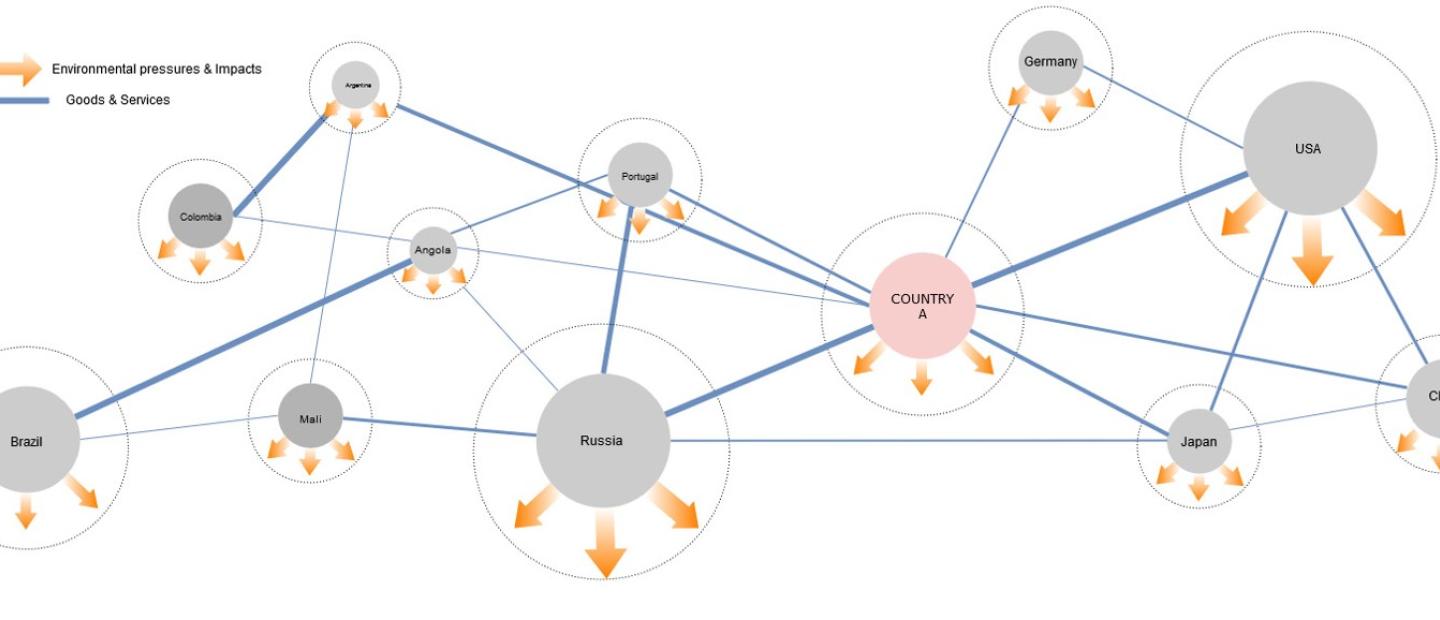HOTSPOT ANALYSIS TOOL FOR SUSTAINABLE CONSUMPTION AND PRODUCTION
To support science-based national policy frameworks
Sustainable Consumption and Production (known as SCP) is about more and better socio-economic growth with less. It is also about decoupling economic growth from environmental degradation, increasing resource efficiency and promoting sustainable lifestyles. To design frameworks conducive to a shift to SCP, policy-makers need to be informed of the key national economic processes and activities that are generating the most harmful environmental and socio-economic impacts (so-called “hotspots”).
The “Hotspot Analysis Tool for Sustainable Consumption and Production (SCP-HAT)” aims at supporting science-based national SCP policies in countries around the world. The tool provides stakeholders of different levels of (policy) expertise with (1) an overview of a country’s performance with regard to SCP-related policy areas and (2) empirical evidence of hotspots of (un)sustainable consumption and production activities. The SCP-HAT allows for analysing direct as well as indirect impacts, i.e. supply-chain wide impacts, brought about by consumption and production activities of national economies.
SCP HAT’s methods and perspectives:
- Based upon an environmentally extended Multi-Regional Input-Output (EE-MRIO) model coupled with information from Life Cycle Impact Assessment (LCIA)
- Tracing all pressures and impacts occurring at different stages of complex supply chains
- Applying two perspectives: domestic production and consumption footprint
- Using same methodology and homogenous datasets for all countries
- Capability to compare different environmental categories, pressures and impacts, domestic and footprint perspectives and countries among each other
- For policy makers, NGOs and the general public.
- Key information on country’s environmental performance
- Clustered in seven environmental categories
- For each environmental category, policy context and main indicators used are explained.
- For policy advisors and researchers with expertise
- Toolbar with a range of SCP indicators (environmental and socio-economic indicators) for hotspot analysis
- Comparison of national vs. footprint perspective
- Comparison of country to regional average/ Comparison of regions
- Sector analysis & comparison
- Trade balance

- For policy advisors and analysts with restricted time resources
- Three standard reports:
- Taylored analyses with adaptive text
- Selection of visualisations from Module 1 and Module 2

